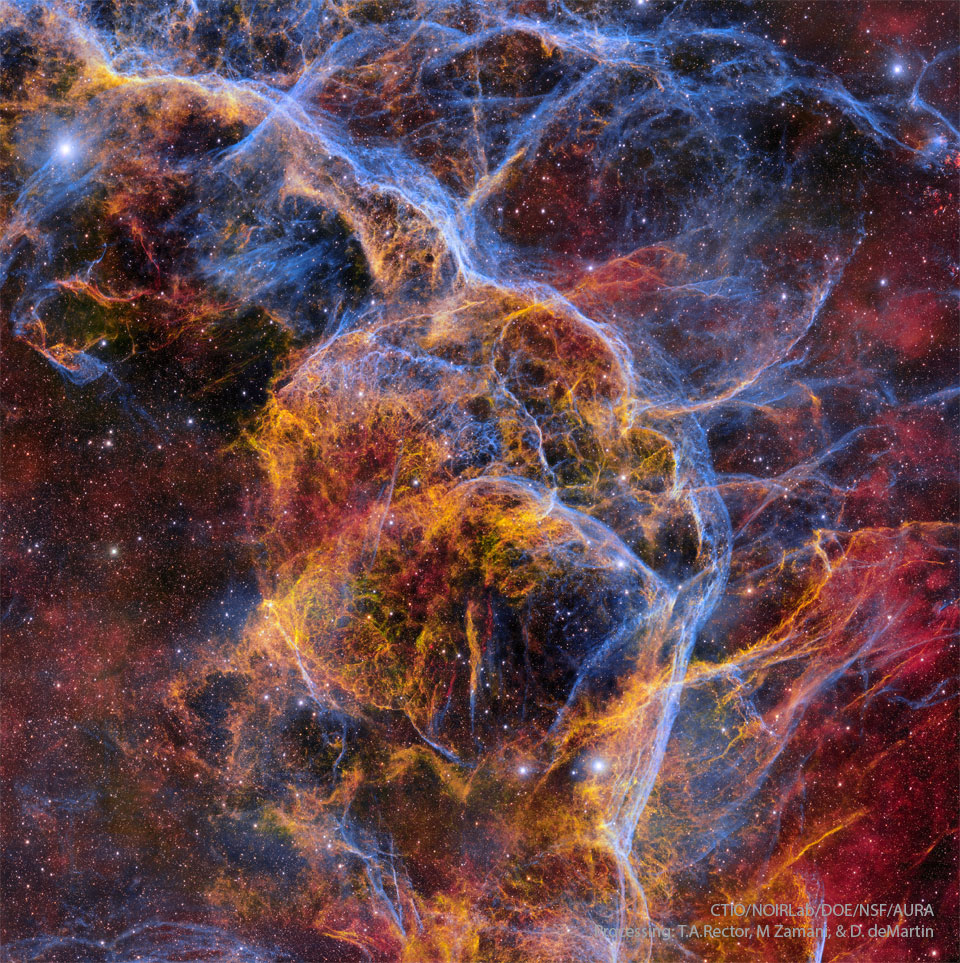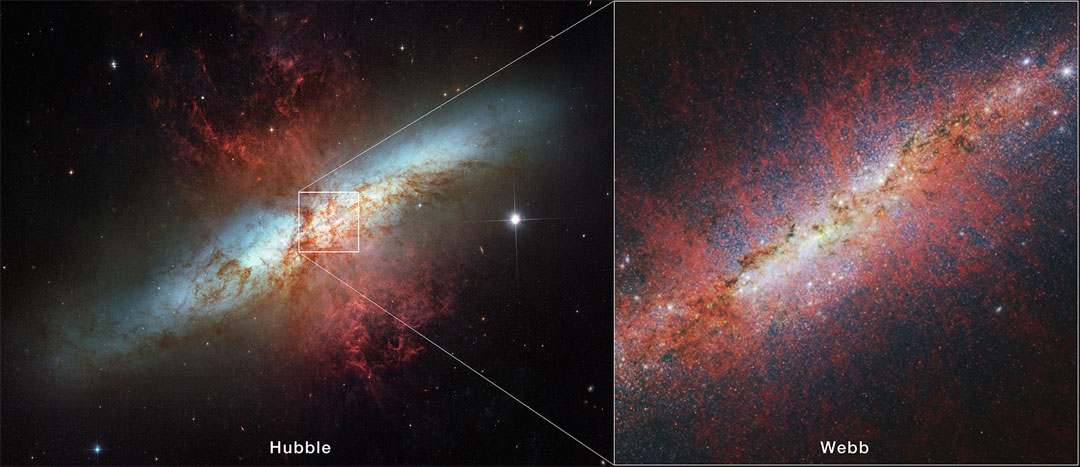Nombre total de pages vues
16/04/2024
SANTé/MEDECINE - La complexité de la tête humaine - Anatomie de la face vue du côté
SANTé/MEDECINE - HISTOIRE - La lobotomie pratiquée jusque dans les années 1960
ASTRONOMY - Filaments of the Vela Supernova Remnant
2024 April 16
Image Credit: CTIO, NOIRLab, DOE, NSF, AURA; Processing: T. A. Rector (U. Alaska Anchorage), M. Zamani & D. de Martin (’s NOIRLab)
Explanation: The explosion is over, but the consequences continue. About eleven thousand years ago, a star in the constellation of Vela could be seen to explode, creating a strange point of light briefly visible to humans living near the beginning of recorded history. The outer layers of the star crashed into the interstellar medium, driving a shock wave that is still visible today. The featured image captures some of that filamentary and gigantic shock in visible light. As gas flies away from the detonated star, it decays and reacts with the interstellar medium, producing light in many different colors and energy bands. Remaining at the center of the Vela Supernova Remnant is a pulsar, a star as dense as nuclear matter that spins around more than ten times in a single second.
15/04/2024
SANTé/MEDECINE - La compléxité de la tête humaine - Anatomie de la tête et radiographie
SANTé/MEDECINE - Le corps humain vu de l'intérieur - L'échographie, une aide au diagnostic
SANTé/MEDECINE - 1953 : découverte de la structure de l'ADN en double hélice
ASTRONOMY -The Cigar Galaxy from Hubble and Webb
2024 April 15
Image Credit: NASA, ESA, CSA, STScI, Alberto Bolatto (UMD)
Explanation: Something strange happened to this galaxy, but what? Known as the Cigar Galaxy and cataloged as M82, red glowing gas and dust are being cast out from the center. Although this starburst galaxy was surely stirred up by a recent pass near its neighbor, large spiral galaxy M81, this doesn't fully explain the source of the red-glowing outwardly expanding gas and dust. Evidence indicates that this material is being driven out by the combined emerging particle winds of many stars, together creating a galactic superwind. In the featured images, a Hubble Space Telescope image in visible light is shown on the left, while a James Webb Space Telescope image of the central region in infrared light is shown on the right. Detailed inspection of the new Webb image shows, unexpectedly, that this red-glowing dust is associated with hot plasma. Research into the nature of this strange nearby galaxy will surely continue.
14/04/2024
SANTé/MEDECINE - La compléxité de la tête humaine - Anatomie de la tête : nerfs de la face
ASTRONOMY - How a Total Solar Eclipse Ended
024 April 14
Video Credit & Copyright: David Duarte
Explanation: How does a total solar eclipse end? Yes, the Moon moves out from fully blocking the Sun, but in the first few seconds of transition, interesting things appear. The first is called a diamond ring. Light might stream between mountains or through relative lowlands around the Moon's edge, as seen from your location, making this sudden first light, when combined with the corona that surrounds the Moon, look like a diamond ring. Within seconds other light streams appear that are called, collectively, Bailey's beads. In the featured video, it may seem that the pink triangular prominence on the Sun is somehow related to where the Sun begins to reappear, but it is not. Observers from other locations saw Bailey's beads emerge from different places around the Moon, away from the iconic triangular solar prominence visible to all. The video was captured with specialized equipment from New Boston, Texas, USA on April 8, 2024.
13/04/2024
SANTé/MEDECINE - Le corps humain vu de l'intérieur - Coeur - cerveau et...tumeurs
ASTRONOMY - Orion and the Ocean of Storms
2025 December 13 Orion and the Ocean of Storms Image Credit: NASA , Artemis 1 Explanation: On December 5, 2022, a camera on board the u...

-
2022 September 26 All the Water on Planet Earth Illustration Credit: Jack Cook, Adam Nieman, Woods Hole Oceanographic Institution ; Data ...
-
2025 May 11 The Surface of Venus from Venera 14 Image Credit: Soviet Planetary Exploration Program , Venera 14 ; Processing & Copyri...








